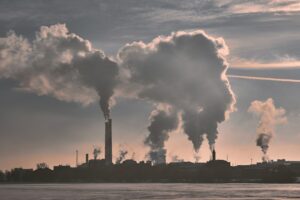The war against plastic may be overshadowing greater threats to the environment.
Plastic is an incredibly useful and versatile material on which much of modern society relies, yet it has become one of the most topical environmental issues of the day.
Over the past few years, plastic pollution has encouraged action from individuals, organisations and governments at levels similar to some of the greatest threats to the environment, such as climate change and biodiversity loss.
This concern is well-founded. Plastic pollution is unsightly, can entangle wildlife, can be ingested and block stomachs and intestines, and may carry harmful chemicals. It can break down into small pieces, eventually to microplastic – pieces smaller than 5 mm – that can accumulate up the food chain. It has also been found in some of the most remote parts of the world.
But though there is widespread animosity towards plastics, they are a group of materials that we cannot live without, and that we should not live without. We argue that plastics themselves are not the cause of the problem, and that failing to recognise these risks exacerbating much greater environmental and social catastrophes.
Some pollution is less visible
The environmental impacts of some less visible pollutants are well known.
Greenhouse gasses such as carbon dioxide and methane contribute to global warming. Fine particles in the atmosphere are associated with respiratory illnesses and are a major component of smog.
And radiation from the Chernobyl nuclear disaster continues to impact the wildlife that has taken over its exclusion zone.
But society pollutes the environment in more ways than most people are aware, and has done since long before concern for plastic pollution became prevalent.
Agriculture leads to nutrient over-enrichment and pesticide pollution. Electronics, vehicles and buildings require a wide variety of toxic metals that leak into the environment at the end of their lives and are blown and washed from where they are mined.
Medicines that are washed down drains and not completely metabolised (used up) by our bodies can also find their way into rivers and lakes.
These lesser-known realities of everyday consumption degrade the environment and are toxic to wildlife. As chemicals, rather than particles like plastic, these pollutants are also far more mobile than plastics and, in the case of toxic metals, more persistent.
Plastic pollution provides a convenient distraction from these inconvenient truths. Starting with political legislation at the very top, high-profile action against plastic pollution has been disproportionate to its environmental impact.
Banning microbeads in cosmetics, for example, addressed only a very small part of the problem.
This is not to say that microbeads are not present in the environment or that they do not pose a risk to it. But those who are in positions of power – scientists, industry, the media, politicians – have an obligation not to mislead their audiences by disseminating research and environmental policy that lacks context.
Focus on the product – not the plastic
Plastic is just one type of anthropogenic material in the environment.
Plastic textile fibres such as polyester or nylon are a prominent form of pollution, but it is natural fibres like wool and cotton that have recently been found to dominate environmental samples.
Though biodegradable, when these natural fibres do degrade they may leach harmful chemicals, such as dyes into the environment.
Glass and aluminium, sometimes promoted as solutions to plastic bottle pollution, can have greater carbon footprints than the plastics they replace.
And many of these alternatives will also persist in the environment. Someone who will throw a plastic bottle into a river will not change their behaviour if they have an aluminium can.
The problem is the product, not the plastic. A desire for convenience, industries reliant on overconsumption, not informed consumption, and a culture of policies for popularity, not progression, are all at the root of the plastic conversation. But the plastic pollution is just the bit you can see.
So what should we do?
‘Plastic’ and ‘plastic pollution’ are all too often confused. Plastic pollution is a visible and easily relatable symptom of unsustainable levels of consumption, inappropriate product design, poor waste management and disingenuous policy.
Greenhouse gas emissions, biodiversity losses, exploitative labour practices and chemical pollution either cannot be seen so clearly or their effects develop over a longer period of time. But once their impacts are visible, it is often too late for the environments they afflict. That’s why there is a pressing need to raise the profile of the pollution that cannot be seen.
Plastic pollution has mobilised unprecedented levels of environmental action. But to be successful this action needs to focus on the true causes, like the overconsumption of readily disposable items, rather than simply the presence of plastic in the environment. It should also do a better job of framing plastic pollution within the context of other, more significant pollutants.
Photo Credit – Pixabay














